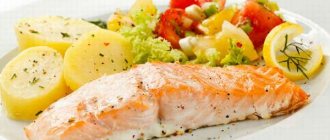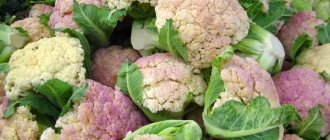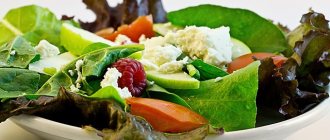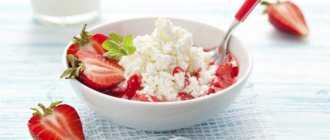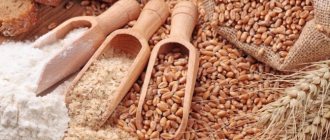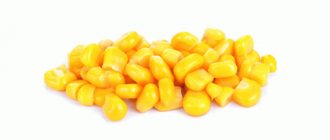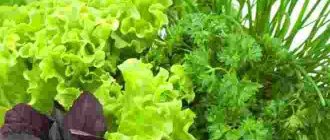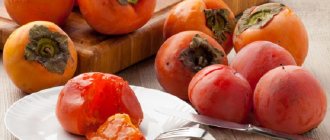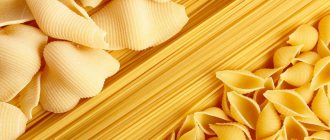Gastritis is a disease accompanied by inflammatory changes in the gastric mucosa and impaired tissue regeneration, with a change in healthy glands to fibrous tissue.
Gastritis leads to a malfunction of the stomach, which is associated with a violation of its secretory function. Violation of this important function for digestion can lead to the development of ulcers if a strict diet prescribed by the attending physician is not followed. Any diet means certain restrictions in the range of dishes and products. Many chronic patients suffering from this problem are interested in the question: is it worth eating seafood and is it okay to eat shrimp for gastritis?
How to use
The condition for including shrimp in the diet is their moderate consumption. Naturally, the cooking method involves only cooking and excludes various types of smoking or roasting. But this does not mean that the delicacy will only have to be eaten boiled. There are many interesting dishes that include seafood that can add variety to a healthy diet.
It is also worth considering that this product is rich in protein and should preferably be consumed before noon. Often the boiled delicacy is added to salads and diversifies the limited number and range of dishes allowed for gastritis.
Chemical composition of shrimp
Although the initial attitude towards shrimp meat was unfair, it was considered harmful, the study of the chemical composition and properties emphasized the value of the raw material. Crustaceans are recognized suppliers of iodine among other marine life.
Shrimp also contain:
- essential amino acids;
- compounds of cobalt, manganese, molybdenum;
- microelements magnesium, sodium, calcium, potassium;
- provitamin A, vitamins D, E, C, group PP, B.
Shrimp meat is recognized as a storehouse of healthy protein, which not only maintains body muscle tone, but is also necessary for the formation of collagen, which maintains elastic, young skin. And the mineral balance, the presence of Omega-3 acids, and other properties of shrimp prevent the development of many diseases, strengthen bones and the circulatory system.
Benefit
Shrimp is a magnificent seafood delicacy, characterized by high nutritional value and low calorie content, rightfully included in the list of the healthiest foods. Per 100 grams of boiled meat there are only 86 kcal. It contains:
- proteins necessary for building muscles;
- monounsaturated or polyunsaturated fats that help normalize cholesterol;
- carbohydrates that have a positive effect on brain activity and the functioning of the cardiovascular system;
- vitamins, including vitamins PP, E, A, group B;
- minerals - potassium, magnesium, iodine, manganese, phosphorus, sodium, iron, selenium, zinc.
The meat of marine arthropods is indispensable for people who maintain a healthy diet. Scientific studies have confirmed that people who consume seafood and fish live much longer and have a longer life activity.
Shrimp and gastritis
This delicacy, given to people by the depths of the sea, contains a lot of useful substances, namely:
- Easily digestible proteins. That is why shrimp are considered a dietary product and are useful for people with gastritis.
- A huge list of microelements - phosphorus, iron, potassium, calcium and a large number of vitamins. Therefore, shrimp meat increases immunity and has a beneficial effect on metabolism.
- Polyunsaturated acids. They remove cholesterol from the body and have a beneficial effect on the heart.
All of the above beneficial properties of shrimp allow them to be consumed by people with gastritis.
Healthy diet salad with shrimp for gastritis
To prevent a therapeutic diet for gastritis from being boring and monotonous, you can use the recipes below.
The main thing in these recipes is to cook the frozen shrimp correctly. Defrosting shrimp in various quick ways, for example, in the microwave or in hot water, is not worth it. This will lead to loss of seafood taste and aroma. Defrost shrimp at room temperature, freeing them from packaging. It will take a little longer, but the shrimp will not lose their beneficial properties and unique taste.
After defrosting, the shrimp must be properly cooked. The cooking technology is slightly different from cooking other products. The whole process can be done in stages:
- boil the required amount of water in a saucepan;
- add salt to water;
- Place shrimp in boiling water and bring to a boil. Let them simmer for just 3-4 minutes;
- Remove the pan with shrimp from the heat and leave them covered for 10-15 minutes. In hot water, the shrimp will become more tender.
Larger specimens of shrimp need to be cooked a little longer - 5-6 minutes.
Apple salad recipe
Ingredients:
- shrimp – 150 g;
- potatoes – 1 pc.;
- apple – 1 pc.;
- green peas – 1-2 tbsp. l.;
- fresh cucumbers – 1 pc.;
- green onions;
- vegetable oil – 1-2 tablespoons;
- salt - to taste.
Preparation:
- Thaw fresh shrimp and rinse them under running water. Bring the water in the pan to a boil. Add some salt. Place the shrimp in boiling water and cook until they float to the surface;
- Remove the pan from the heat and let stand for 10-15 minutes. At the same time as the shrimp, boil the potatoes, cool and peel.
- Cut the potatoes into cubes. Peel the apple and chop it finely. Wash and chop the onion and cucumber too.
- Remove the shrimp meat from the shell and cut into pieces. Combine all prepared salad products together in a salad bowl, mix, add salt and vegetable oil.
Benefits of shrimp
Shrimp is a dietary product, as it contains easily digestible proteins. It is these substances that make seafood useful for any diseases of the digestive system. In addition, the natural product contains many vitamins and nutrients necessary for the full functioning of the organs and systems of the human body.
It has been proven that regular inclusion of seafood in the diet strengthens the immune system and improves metabolism, which has a beneficial effect on the condition of the body as a whole.
These seafood are rich in polyunsaturated acids. Eating shrimp allows you to remove bad cholesterol from the body, which contributes to the proper functioning of the cardiovascular system. Also, the balanced composition of the natural product allows:
- Accelerate cell regeneration.
- Maintain normal hormonal levels.
- Improve the condition of the skin, nails and hair.
- Increase performance.
Is it possible to eat shrimp for gastritis?
Shrimp are a very tasty seafood gift, so the question of whether you can eat them with gastritis or not is very common. Most experts do not prohibit including these seafood in the diet during the period of remission.
They should be abandoned only in case of exacerbation of gastritis. Answering positively to the question whether it is possible to eat shrimp with gastritis, doctors always emphasize that they should be present in the diet in moderation.
Advice! It is important to remember that for any diseases of the gastrointestinal tract, overeating is always dangerous.
Since shrimp are a protein product, it is recommended to eat them in the first half of the day. In this case, increased loading of the stomach before a night's rest, when digestion processes slow down, is eliminated.
This type of seafood can be included in the diet not only as a separate boiled dish, but also added to various salads. You should not eat seafood in combination with various prohibited spices or in smoked form.
Shrimp Recipes
Recipes with seafood are very popular among gourmets. Seafood goes well with potatoes, green peas, apples, fresh cucumbers and green onions.
It is important that all products in salads are sufficiently chopped. For gastritis with high acidity, it is recommended to avoid eating seafood, as they increase the production of gastric juice. The hydrochloric acid contained in it is an irritant and can provoke an exacerbation of the disease.
Salad with shrimp
With low acidity due to gastritis during the period of remission, seafood-based salad is considered a very healthy dish. It saturates the body with vitamins and nutrients, strengthening the immune system. This promotes faster recovery of the inflamed mucous membrane.
To prepare a delicious dish, you will need to boil 100 g of shrimp and a small jacket potato. Other ingredients in the salad in small quantities may include:
- Peeled medium sized apple.
- A tablespoon of green peas.
- A couple of small fresh or pickled cucumbers.
- A few green onions.
Boiled shrimp need to be peeled. Their fin and shell are removed. All ingredients are thoroughly washed under running water and crushed. This salad should be salted to taste, and it is better to season it with olive oil in a small amount. It is strictly forbidden to use mayonnaise or other sauces for dressing.
Boiled shrimp
Boiled seafood, used as a separate dish, allows you to diversify your diet. To do this, you need to first defrost them by rinsing them under running cold water. It is not recommended to use a microwave for defrosting, as in this case the taste is lost.
To cook the shrimp, place them in boiling salted water and cook until they float to the surface. This usually happens within 3-4 minutes. Then remove the pan from the heat and leave the shrimp in it for a quarter of an hour.
After this, place the ready-to-eat shrimp on a plate. This cooking method is also suitable for cases where seafood is planned to be used for salad.
If you eat seafood only in boiled form, you can use it as a snack between main meals. They satisfy the feeling of hunger well. It is allowed to enhance the taste of such a dish with permitted seasonings. For example, you can use dill, parsley, celery.
Contraindications
Gastritis with high acidity is a contraindication for eating shrimp. Seafood increases the production of gastric juice, which is a threat and can lead to an exacerbation of the disease. Therefore, with this form of the disease, you should not eat them even during the period of remission.
In addition, dishes with shrimp should be avoided during periods of immediate exacerbation of gastritis. It is not recommended to consume this type of seafood when there is the slightest pain or discomfort in the stomach area. At this time, you should adhere to a strict diet based on the inclusion in the diet of neutral, easily digestible foods and dishes exclusively in pureed form.
Useful video
You can find out how seafood is beneficial in this video.
Warm salad recipe
Another salad with shrimp. Compound:
- shrimp – 150 g;
- hard cheese – 10 g;
- eggs, without yolks – 2 pcs.;
- lettuce leaves;
- white bread – 50 g;
- yogurt without additives.
Preparation:
- Boil hard-boiled eggs, peel them and remove the yolks. Cut the white part and mix with chopped lettuce leaves. Dry finely chopped white bread in a dry frying pan and mix with the rest of the ingredients.
- Boil shrimp in salted water. Grate the cheese on a coarse grater.
- Mix all ingredients together, add salt to taste. Dress the salad with classic yogurt.
How much cholesterol is in shrimp?
Shrimp contain a large amount of cholesterol, being the leaders among seafood in this property. 100 g of crustacean meat contains 160–190 mg of cholesterol, but no more than 2.2 g of fat. These properties are an indication that the benefits of eating arthropods for many are greater than the harm. After all, they do not create conditions for the synthesis of cholesterol in the human body. On the contrary, healthy unsaturated acids and the absence of saturated fats provoke cleansing of blood vessels.
Important! In reasonable quantities, even bad cholesterol is necessary for the body to function normally. It promotes the proper functioning of the brain, digestive system, hormones; its properties are necessary for the formation of cell membranes.
Recommendations from doctors and nutritionists
Gastroenterologists and nutritionists, while recognizing the benefits of shrimp, still do not recommend consuming them during exacerbation of gastritis. During periods of remission, they can be eaten boiled, but in small portions, without overeating. You can also eat seafood in salads, along with permitted foods. It is recommended to season salads with shrimp with olive oil.
Despite the fact that doctors and nutritionists do not rule out the possibility of eating shrimp for gastritis, you should still consult your doctor before consuming these seafood.
Nutritional value and calorie content of shrimp
Marine arthropods belong to dietary products, the calorie content of which often depends on the degree and type of processing.
| Cooking method | 100 g |
| Raw meat | 96 kcal |
| Boiled | 95 kcal |
| Breaded fried | 242 kcal |
| Baked with sauce | 175 kcal |
| For a couple | 99 kcal |
| Lightly toasted | 116 kcal |
| Pickled | 60–75 kcal |
The calorie content of the popular king and tiger prawns is not much different: 86.9 and 90 kcal per 100 g, respectively.
The benefits of shrimp meat are complemented by the opportunity to eat deliciously without harming the body through hunger strikes or monotonous and nutrient-poor foods.
General recommendations on diet for gastritis of the stomach
When developing a dietary menu, the acidity of the gastric juice of a patient with gastritis should be taken into account, since food products have different effects on the secretion and motility of the stomach. But there are general diet rules that are valid for gastritis of any type:
- full breakfast;
- observing breaks between meals (3 – 4 hours);
- regularity and fractionation of meals (5 – 6 meals a day, in small portions);
- the interval between dinner and bedtime (at least 3 hours);
- thorough chewing;
- drinking drinks no earlier than half an hour after eating;
- refusal of dry food and food on the go;
- exclusion of spicy, fatty, fried, smoked foods;
- limiting the consumption of sugar and sweet foods, fresh bread (especially warm);
- giving up coffee and carbonated drinks;
- using only fresh and high-quality products.
It is better to avoid chocolate altogether if you have gastritis. Drinking alcohol and smoking are also strictly contraindicated. It is worth giving up even such light drinks as beer and dry wine, especially with hyperacid gastritis. It is advisable to eat food at the same time. You should switch to a new diet gradually.
Is it possible to fast if you have gastritis?
Some doctors practice methods of treating gastritis using fasting. Such techniques can have a positive effect with proper alternation of fasting and a strict diet. But you should not fast without consulting a doctor, in order to avoid worsening the condition of the gastric mucosa, especially during the phase of exacerbation of the disease. Compliance with a therapeutic diet is the key to success in curing gastritis. Completely avoiding junk food and including recommended products in the menu will help relieve unpleasant symptoms of the disease and prevent exacerbation of gastritis.
Features of eating shrimp for diseases
The composition of beneficial crustaceans includes a unique antioxidant astaxanthin, which exceeds the effectiveness of similar substances found in fruits. It protects the body from premature age-related destruction, neutralizes stress, and helps treat arthritis, gout, rheumatism and other common diseases. Moreover, the benefits of king prawns and smaller specimens are the same.
For diabetes
People suffering from diabetes are recommended to consume shrimp. Iodine from arthropod meat will strengthen the body and help internal organs function properly. The dietary product is easily digested and cleanses the body of food waste and toxins. The daily portion of shrimp should not exceed 100 g, since the abundance of cholesterol combined with minerals can neutralize the effects of medications taken, causing harm to health.
For pancreatitis
Treatment of the pancreas is inextricably linked with adherence to a strict diet and certain dietary restrictions. During an exacerbation of pancreatitis, it is better to avoid marine crustaceans. After normalization of indicators, the diet is replenished with healthy shrimp as an ingredient in cutlets, soufflé, and puree soup.
For gastritis and stomach ulcers
The reasons that force you to refuse treats if you have a stomach ulcer or gastritis due to the harm they cause are:
- exacerbation of the disease;
- increased acidity;
- allergic reaction;
- improper preparation.
Only boiled shrimp, served without excess salt, spices, or lemon juice, which will lead to irritation of the stomach walls and increased secretion of gastric juice, will be beneficial. Served in a salad with boiled peas and a variety of vegetables, steamed or boiled shrimp will only bring benefits due to their properties.
Nutrition for gastritis
Proper nutrition for gastritis depends on whether there is increased or decreased acidity of gastric juice. In the first case, it is recommended to avoid foods that stimulate the production of hydrochloric acid, while in the second case, these foods will be useful in the diet. Note that in practice, gastritis with high acidity is more common.
In addition, for any type of gastritis, you should not eat foods that cause mechanical and thermal damage to the stomach - primarily crackers and excessively hot foods. Carbonated drinks, hot spices, and excess salt are prohibited. The diet should consist of predominantly liquid and mushy food, taken warm in small portions.
What not to eat if you have gastritis:
- excessively hot and cold foods
- rough foods that can damage the stomach
- fermentable foods
- heavy fatty foods
- most spices (including bell pepper)
- most sauces (mayonnaise, ketchup, mustard)
- carbonated drinks
- alcoholic drinks
- strong tea, coffee and chocolate
What can you eat?
Nutrition for gastritis should be based on the consumption of fresh vegetables (they are alkaline in nature and reduce the acidity of gastric juice), natural products (well-cooked whole grain cereals), lean meat and eggs. Pasta and a small amount of fresh bread are acceptable, but it is better to avoid sweet pastries, cookies and crackers. Food must be chewed thoroughly.
Note that with gastritis with low acidity of gastric juice, you can eat a small amount of fruits (primarily citrus fruits) and some dairy products (for example, cottage cheese and cheese) - whereas with gastritis with high acidity they are not recommended. At the same time, milk is useful if there is excess acid production, but is prohibited if there is insufficient acid production (it lowers the acidity of the stomach).
Are marinated shrimp healthy?
Marinated shrimp contain the least amount of calories without losing their beneficial properties during cooking. They contain the same microelements, protein and vitamins as fresh raw materials. When consumed in this form, dietary arthropod meat serves as a natural protector of the body, strengthening it and improving resistance to disease.
Advice! Marinated crustaceans will acquire an even better taste without loss of quality if you keep them in the refrigerator for about a day before serving. During the cooking process, bay leaves, olive oil, and herbs are used to enrich the taste of the dish.
What can you eat if you have gastritis?
What foods can be consumed for gastritis by patients with high acidity of gastric juice:
- Floury. Eating bread for gastritis is not prohibited; it is important to decide which bread will not be harmful. Rye bread causes fermentation, so it is better to include wheat bread, day-old or dried, crackers, and lean cookies in the menu.
- Porridge. It is advisable to cook cereals in water, but it is acceptable with a small addition of milk. Oatmeal, buckwheat and rice are recommended for consumption.
- Vegetables. Carrots, boiled potatoes, beets, cauliflower in the form of puree or pureed soup. Ripe, non-acidic tomatoes without peel are acceptable in small quantities.
- You can eat fruits, but in limited quantities. It is acceptable to eat bananas, pears, sour berries, and baked apples. It is preferable to consume fruits in the form of purees or compotes.
- Among the spices, it is permissible to add dill, parsley, cinnamon and vanillin to dishes in small quantities.
- Eggs. You can eat no more than one egg per day in the form of a steamed protein omelet, “in a bag” or soft-boiled.
- Dairy products. Milk is acceptable in small quantities, preferably low-fat. It is better to use it as an additive to tea. Low-fat cottage cheese will help prevent heartburn. You can include a little cream or low-fat sour cream in the menu.
- Butter and vegetable oil can be consumed in limited quantities.
- Meat. Only dietary varieties: low-fat lamb, poultry (chicken or turkey), boiled rabbit. It is recommended to remove skin and tendons from the meat and chop finely before eating.
- Fish. Preference should be given to low-fat fish such as pollock and cod. It is recommended to steam it, whole or in the form of cutlets.
- Seafood. In limited quantities.
- Sweet. Limited consumption of marshmallows, marshmallows, and milk cream is acceptable. In small quantities, honey is useful for patients with gastritis, especially if consumed in the form of an aqueous solution 1 - 2 hours before meals.
- Beverages. It is recommended to consume drinks that do not have a significant effect on the secretory function of the stomach. This is weak tea with milk, jelly, alkaline mineral water without carbon, fruit juice. A patient with gastritis will benefit from natural juices from cabbage, potatoes and carrots. Not only are they an excellent source of vitamins and microelements, but they also prevent the development of stomach ulcers. You can also drink other non-acidic juices. Juices that are too sweet are consumed diluted. Rosehip decoction has a healing effect and improves appetite.
- Floury. Day-old wheat bread.
- Porridge. Oatmeal, buckwheat and semolina cooked exclusively in water are recommended.
- Vegetables. Zucchini, boiled potatoes, cauliflower and white cabbage, pumpkin - in the form of puree, pureed soup or steamed.
- Fruits. Watermelon, peeled grapes, and baked apples are allowed for consumption.
- Sweet. “Honey water” is recommended for consumption 1 – 2 hours before meals. Has a beneficial effect on the condition of the gastric mucosa and appetite.
- Eggs. No more than two per day in the form of a steam omelet, “in a bag” or soft-boiled.
- Dairy products. Milk is acceptable as an additive to tea. You need to eat fermented milk products (kefir, natural yogurt, etc.), mild cheese.
- Fish. Marine fish species are preferred. To improve appetite, a little salted herring is acceptable.
- Oils. Vegetable oils and butter are allowed in moderation.
- Meat. You can include veal, beef and poultry (chicken or turkey) cleaned of skin and tendons in your diet menu. It is recommended to consume the meat steamed or in the form of broth, with the addition of cereals or pasta.
- Beverages. Weak tea with lemon or a little milk, weak coffee, cocoa. Rosehip decoction, cabbage, carrot, and potato juices will be useful for the gastric mucosa and good appetite. Drinks should be consumed before meals or, in extreme cases, no earlier than half an hour after meals.
For gastritis with low acidity, you should eat foods that stimulate the production of gastric juice and improve appetite, which usually suffers with this diagnosis. List of recommended products:
What can you eat if you have gastritis with high acidity?
For this type of gastritis (hyperacid), doctors advise sticking to table No. 1.
This version of the therapeutic diet is a diet with high energy value and an optimal balance of nutrients. It excludes products that have an aggressive effect on the gastric mucosa and also increase the secretion of hydrochloric acid. Too hot and, conversely, cold food is also prohibited. Table No. 1 is based on easily digestible foods.
Food should be taken five to six times a day, limiting the size of portions.
The required period of maintaining the diet is determined by the gastroenterologist.
The main tasks of the “first table”:
- decreased secretion of hydrochloric acid;
- exclusion of aggressive chemical, temperature and physical effects on the gastric mucosa;
- improvement of motor function of the gastrointestinal tract;
- relieving inflammation;
- activation of regenerative processes.
Table No. 1 is indicated for moderate exacerbation of chronic hyperacid gastritis and stomach ulcers. It is also prescribed during the recovery stage after acute gastritis.
Proteins, fats and carbohydrates in this type of diet are in a ratio of 1:1:4.
In case of exacerbation of gastritis with high acidity, boiled and steamed dishes are recommended. The strict option involves eating food only in a pureed state. The amount of salt is no more than 10 g per day.
Now let's talk in detail: what can you eat if you have gastritis with high acidity? First of all, these are oatmeal, rice, semolina, buckwheat porridge, including milk porridge. Pasta and noodles are acceptable. The diet may include lean meat and fish in the form of steamed meatballs, cutlets, and meatballs. During the recovery stage, tender meat and fish can be cooked in one piece. Vegetables allowed are potatoes, pumpkin, zucchini, cauliflower, carrots, beets, and fruits - fresh and baked apricots, peaches, bananas.
The list of recommended dairy products includes milk and cream, yogurt, fresh cottage cheese, cottage cheese casseroles and cheesecakes. You can drink non-acidic kefir.
Allowed first courses are pureed vegetable soups, milk soups with chopped vegetables and cereals. Eggs can be soft-boiled or steamed omelet. Stale white bread and cookies made from dough are allowed. Safe sweets for gastritis with high acidity - jelly (milk and fruit), mousses, jelly, marshmallows, marshmallows, sweet fruit jam.
For gastritis of the hyperacid type, you can drink non-acidic diluted juices from fruits and vegetables, jelly, dried fruit compotes, weakly brewed tea, and sometimes cocoa with milk.
The list of foods and dishes prohibited for gastritis with increased secretory function is quite extensive. Meat and fish with a high fat content, smoked foods, industrial and home canned food, spicy snacks, sauces and spices, and fried foods are excluded. You should not eat sour fruits and vegetables, as well as fruits with a lot of fiber. Coffee, carbonated drinks, chocolate and ice cream, broths, any fresh bread, baked goods, sharp cheese, hard-boiled eggs, and legumes are prohibited.
Sample menu for the day:
Breakfast: omelet cooked in a double boiler, or viscous rice porridge with milk, weak tea.
Second breakfast: cottage cheese, mashed with sugar.
Lunch: puree soup with vegetable broth, steamed fish cutlet, cauliflower puree, dried fruit compote.
Afternoon snack: milk jelly, dough cookies.
Dinner: mashed potatoes, beef meatballs, rosehip broth.
Before bed: non-acidic kefir.
What can you eat if you have gastritis with low acidity?
Table No. 2, prescribed for low acidity of gastric juice (gastritis of the hypoacid type), is less strict than the one discussed above. But coarse, hard, hard-to-digest foods, hot and cold dishes are also excluded from the diet. Frequent meals are recommended, small portion sizes. The timing of the diet is agreed with the doctor.
